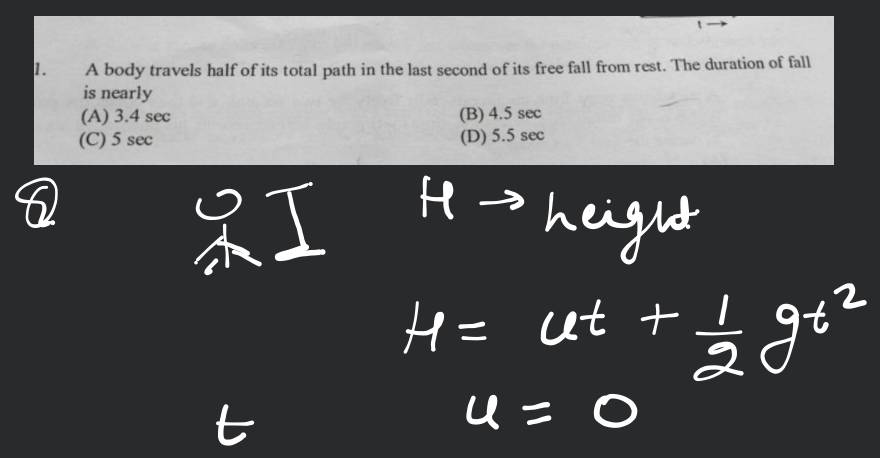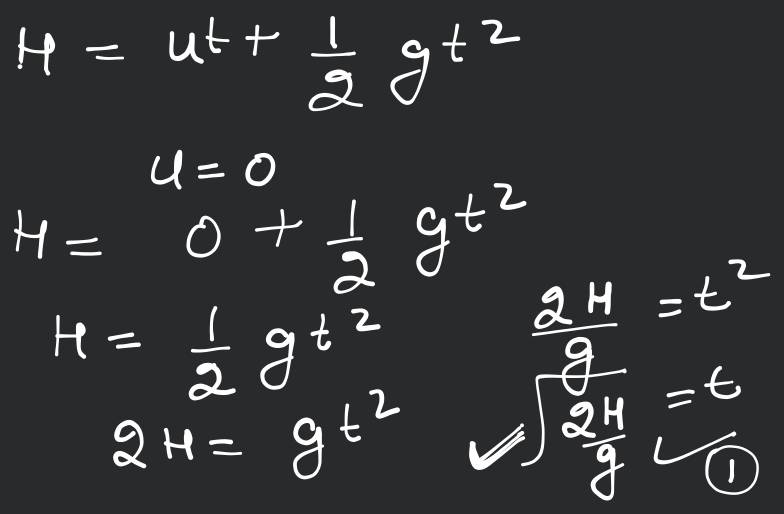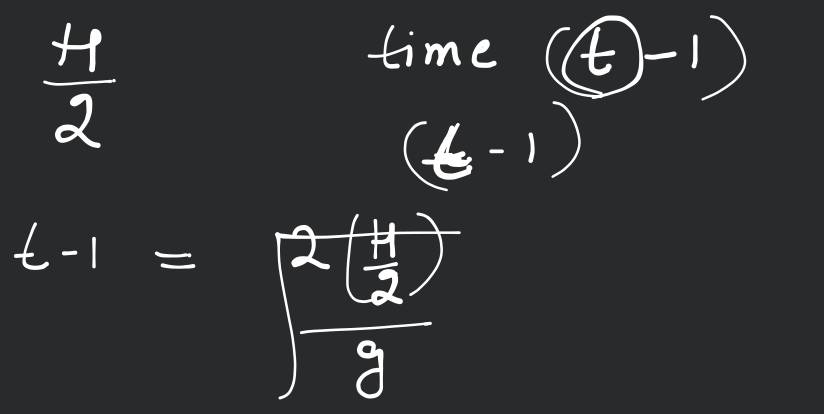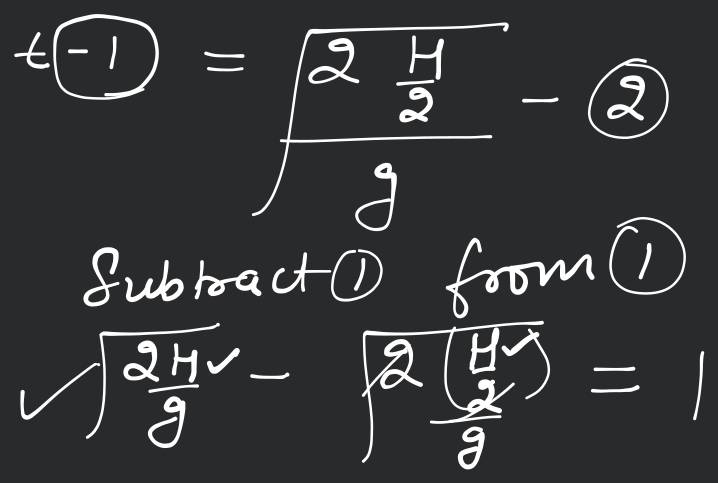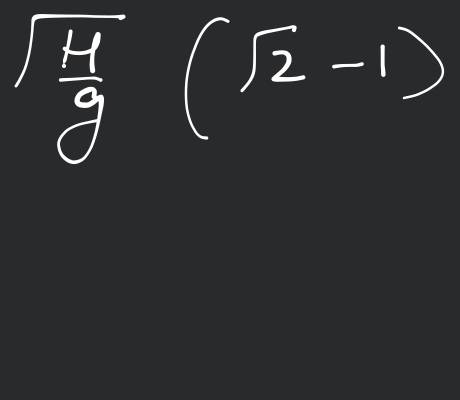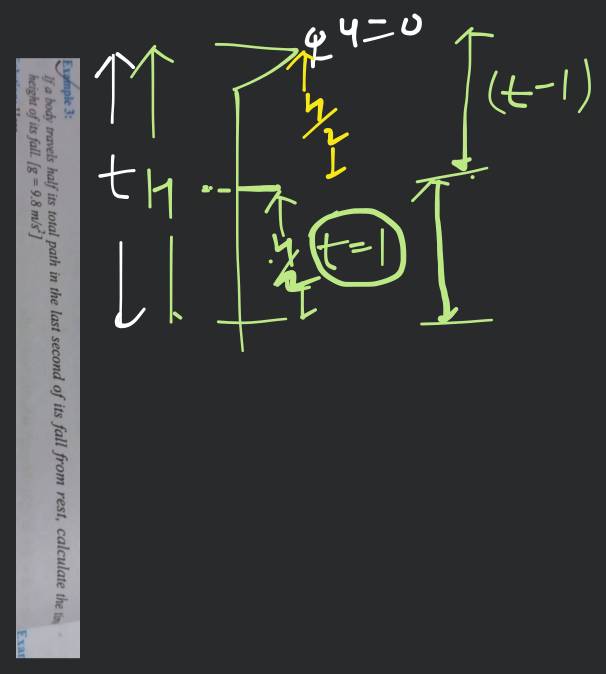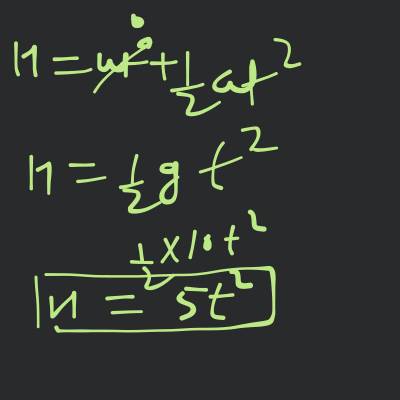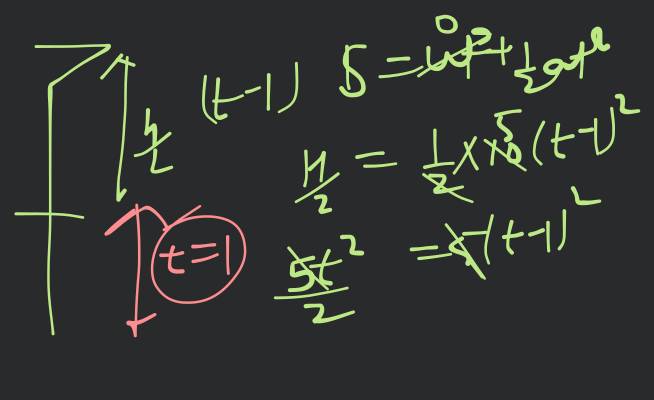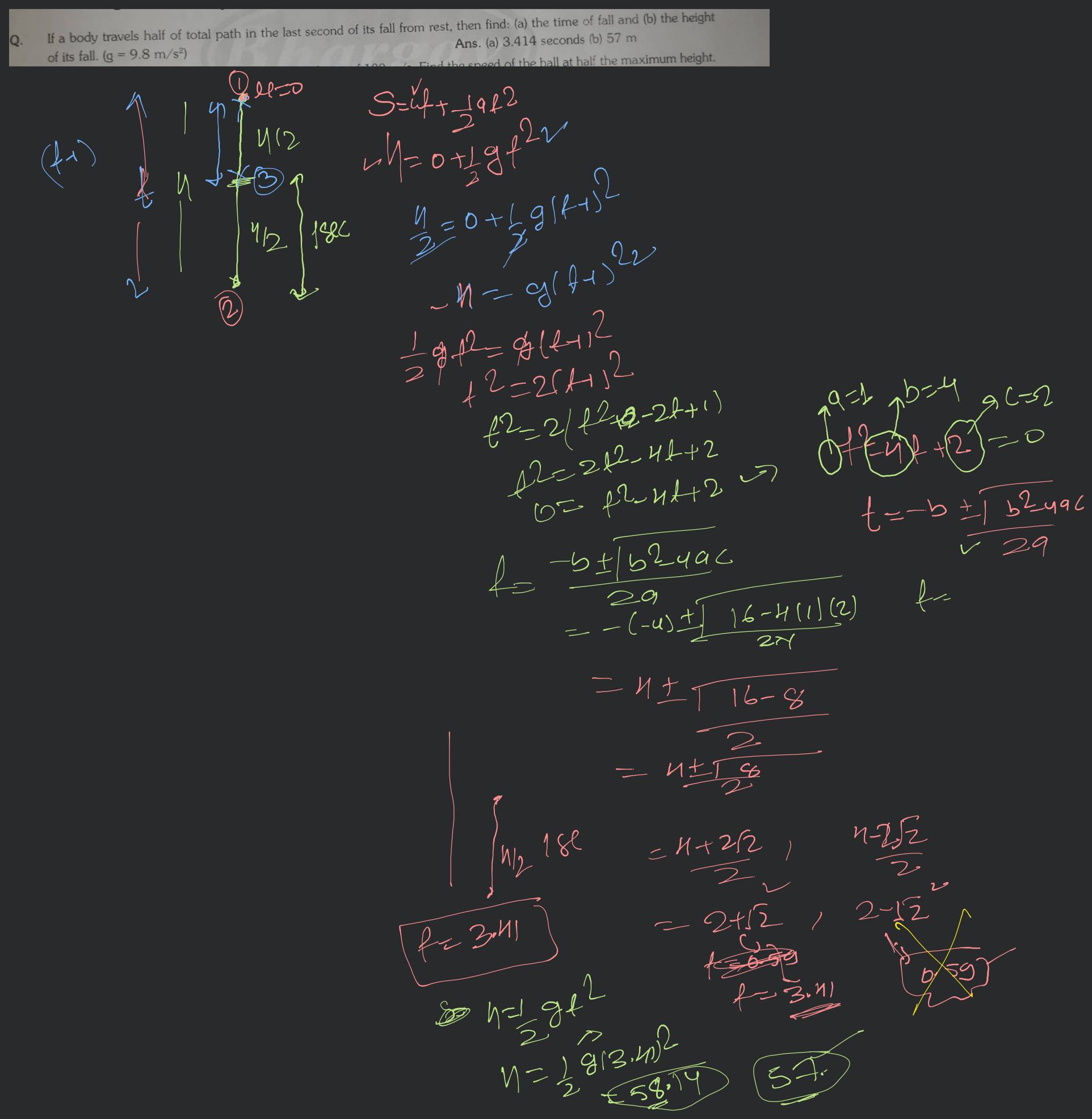Question
Easy
Solving time: 2 mins
If a body travels half its total path in the last second of its fall from rest, find the time and height of its fall. Take
Found 8 tutors discussing this question
Discuss this question LIVE
13 mins ago
 Text solution
Text solution Verified
Verified
If be the total height the body falls from rest, total time to fall is
It is given that the body falls distance in time , thus we have
or from above equations, eliminating , we have
or
or
or
Total time of fall is
It is given that the body falls distance in time , thus we have
or from above equations, eliminating , we have
or
or
or
Total time of fall is
Was this solution helpful?
72
Share
Report
Filo tutor solutions (8)
Learn from their 1-to-1 discussion with Filo tutors.
6 mins
Uploaded on: 5/4/2023
Was this solution helpful?
86
Share
Report
8 mins
Uploaded on: 3/11/2023
Was this solution helpful?
66
Share
Report

One destination to cover all your homework and assignment needs
Learn Practice Revision Succeed

Instant 1:1 help, 24x7
60, 000+ Expert tutors

Textbook solutions
Big idea maths, McGraw-Hill Education etc

Essay review
Get expert feedback on your essay

Schedule classes
High dosage tutoring from Dedicated 3 experts
Practice questions from Physics Galaxy Mechanics Vol 1 (Ashish Arora)
Question 1
Medium
Views: 5,771
Question 2
Medium
Views: 5,823
Question 3
Medium
Views: 5,642
Question 4
Medium
Views: 5,395
Practice more questions from Motion in Straight Line
Question 1
Hard
Views: 5,723
Question 2
Easy
Views: 12,445
Question 3
Medium
Views: 5,404
Question 4
Medium
Views: 5,848
Practice questions on similar concepts asked by Filo students
Question 1
Views: 5,823
Question 2
Views: 5,943
Question 3
Views: 5,061
Question 4
Views: 5,783


Stuck on the question or explanation?
Connect with our Physics tutors online and get step by step solution of this question.
231 students are taking LIVE classes
| Question Text | If a body travels half its total path in the last second of its fall from rest, find the time and height of its fall. Take |
| Updated On | Sep 8, 2023 |
| Topic | Motion in Straight Line |
| Subject | Physics |
| Class | Class 11 |
| Answer Type | Text solution:1 Video solution: 8 |
| Upvotes | 811 |
| Avg. Video Duration | 9 min |



